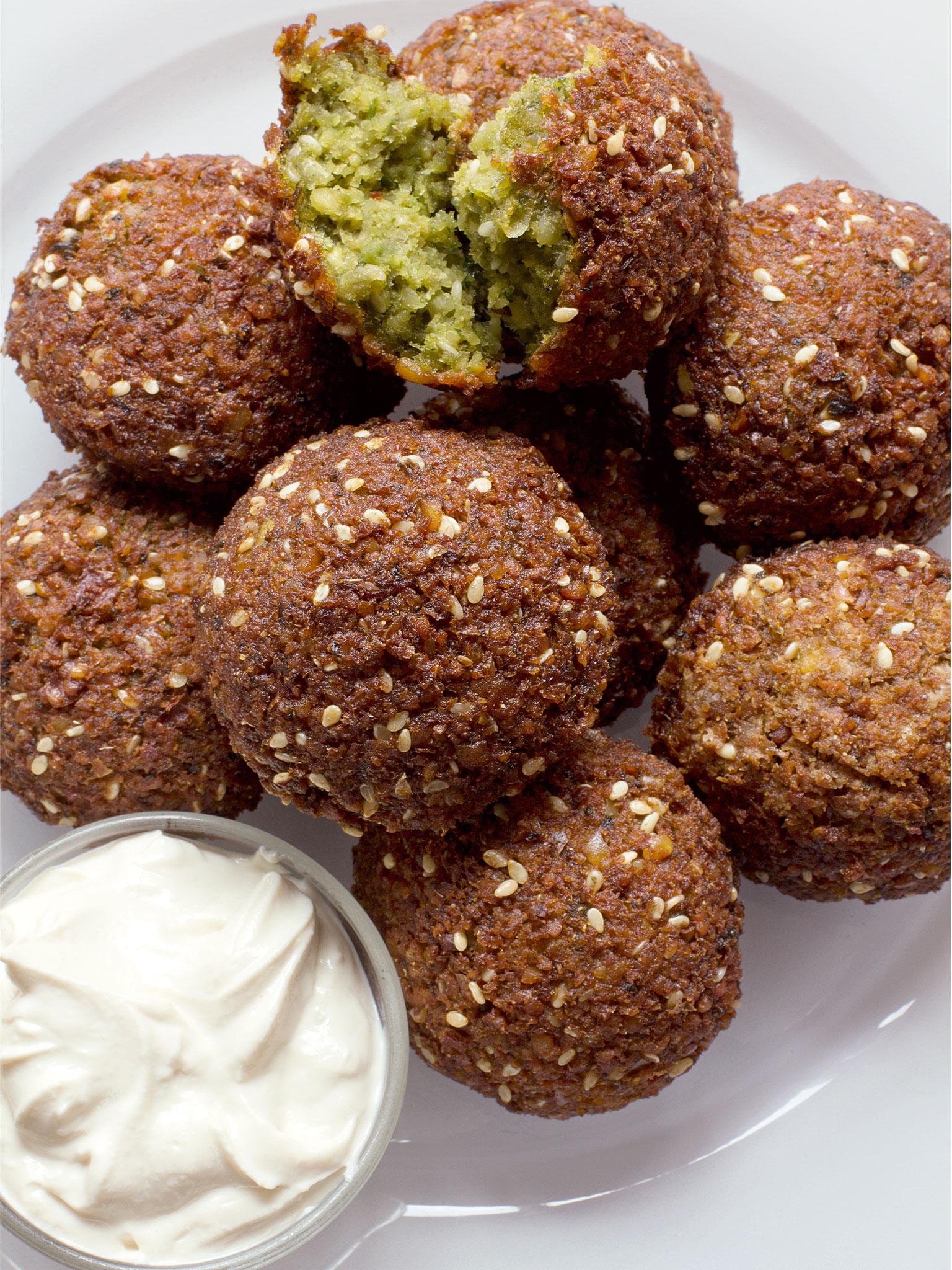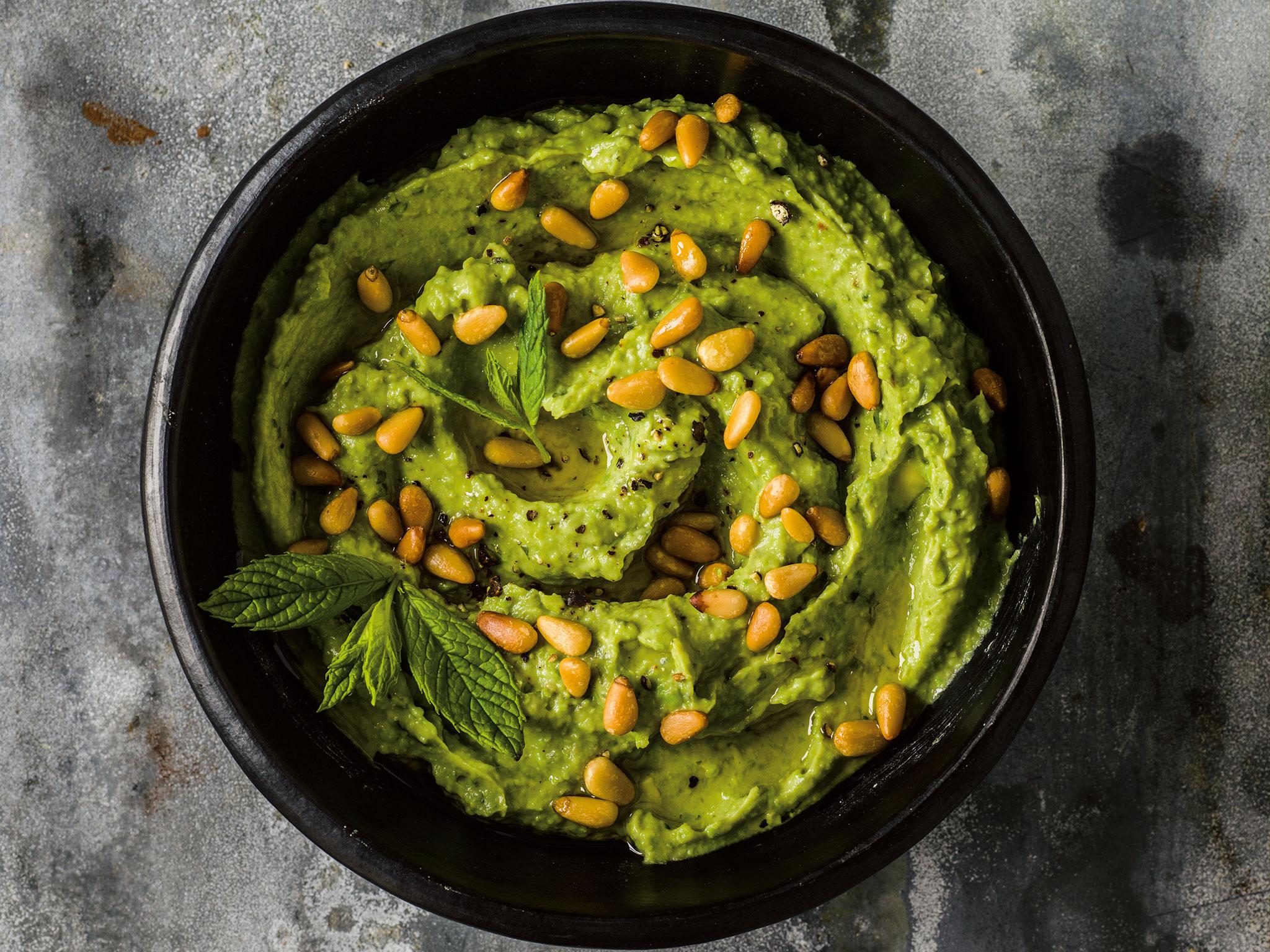International Falafel Day: How the Middle Eatern mezze found its way to the shelves of Greggs
Give chickpeas a chance on International Falafel Day

Your support helps us to tell the story
From reproductive rights to climate change to Big Tech, The Independent is on the ground when the story is developing. Whether it's investigating the financials of Elon Musk's pro-Trump PAC or producing our latest documentary, 'The A Word', which shines a light on the American women fighting for reproductive rights, we know how important it is to parse out the facts from the messaging.
At such a critical moment in US history, we need reporters on the ground. Your donation allows us to keep sending journalists to speak to both sides of the story.
The Independent is trusted by Americans across the entire political spectrum. And unlike many other quality news outlets, we choose not to lock Americans out of our reporting and analysis with paywalls. We believe quality journalism should be available to everyone, paid for by those who can afford it.
Your support makes all the difference.The satisfying crunch of the first bite. The soft, bittersweet centre, made even better with a slick of moreish tahini dip. Falafel truly are one of the best comfort foods. And if you still haven’t tried one – yes, you should be ashamed – International Falafel Day is the perfect chance to pop your chickpea-ball cherry.
There’s really no excuse not to join in (not that any reasonable person would try to find one). The map on International Falafel Day website is filled with pins, proving that there isn’t a single continent that doesn’t serve them in at least one location. Shaped by hand and fried in minutes, they are a breeze to make at home, too.
Although cooks add their own twists, ground chickpeas, broad beans or a deliciously earthy combination of the two are the basis of traditional falafel, meaning they are low in fat, high in protein and cheap to make. The balls are commonly served in a wrap, with fresh salad, pickles and a tahini sauce
Falafel have been popular in the Middle East and parts of North Africa for thousands of years. In UK, we’re a few millennia late to the trend, and their popularity has been growing since the early 2000s. As the number of vegetarians and vegans has risen in recent years so has demand for the crunchy mezze.
Nothing quite signifies that a food has reached its mainstream peak in the UK like Greggs partly pinning its rise in 2016 first-quarter profits on its falafel and hummus salad, featured in its new ‘balanced choice’ range.
But falafel masters Greggs are not. Falafel connoisseurs know to head to their local, high-quality kebab shop for a decent fix. Having noticed a niche for top-notch falafel on the high-street, a number of restaurants with more bells and whistles than the average kebab shop have also popped up in the past decade.
Among the most successful are Beirut street-food masters Yalla Yalla, which has expanded from its tiny yet cheerfully yellow and white-themed store in London’s Soho to a store near Oxford Circus and a handful of pop-ups, and Comptoir Libanais, which has locations in the capital, as well as Manchester, while a café in Exeter is in the works.
Even at 10:30pm on a Thursday evening, the South Kensington branch of Comptoir Libanais in upmarket West London is relatively busy, with relaxed diners perched on stylish red and white metal chairs. At the entrance is the familiar glass-top counter you’d find in a high-street kebab joint – filled with bright salads and piles of flatbreads. However, the décor is decidedly chic. Shouting from the white walls are stacks of magenta, green and yellow pickle jars, mutli-coloured straw shopping baskets and glistening silver teapots. Showcasing the humble falafel’s versatility, the patty is featured in no less than five dishes, including as a standalone mezze served with tahini sauce. I opt for the falafel and fattoush salad. Here, the patties are made with chickpeas and broadbeans, and delicately seasoned with coriander, parsley, and a touch of chilli. The simple, refreshing salad of mint, coriander, cucumber and tomatoes is given a zing with pickled turnips and parsley, and served alongside a creamy tahini sauce doused in olive oil. Wrapped in a warm, chewy kobez, the falafel are perfect: a little crunchy, and soft and fluffy on the inside.
Tony Kitous, the founder of the Levant Group of Lebanese restaurants, opened Comptoir Libanais in 2008. He hopes Lebanese cuisine – which he describes as causal and very simple to make – will one day be as popular as Italian food in the UK.
“Falafel are very good for you because they’re made of chickpeas. They’re high in protein and fibre and delicious on flatbread or with a yoghurt or tahini dip. They’re really popular including amongst children and vegans and vegetarians swear by them. Falafel attract the whole family around the table – the beauty is really in the sharing of it,“ he says.
A sort of culinary blank slate, falafel lends themselves to new twists. In the spirit of the imaginative street-food and pop-up restaurant culture that has the UK in its grasp, Comptoir Libanais tested a prawn and dill falafel with a coconut and chilli dip in one of its stores, while Yalla Yalla has experimented with crab falafel presented with a green harissa sauce.
“We're working to develop a quinoa falafel with basil, lemon zest and tahini sauce; and kale and halloumi cheese falafel with toasted sesame seeds,” says Beirut-born Jad Youssef, who founded Yalla Yalla in 2008.
Already a street-food staple across the world, the falafel has also grabbed the attention of pop-up restaurants. Daniel Young, founder of the Young and Foodish pop-up up pioneer behind the London Pizza Festival, held the first London Falafel Festival on 1 May in London’s Borough Market.
Falafel innovator Abdullah Amin of Origins Of in Shoreditch was among those at the event, where he presented a “trilafel” made with three pulses – chickpeas, red lentils, black-eyed beans – and served with herb-infused tahini, Scotch bonnet mayonnaise and sumac yogurt.
Amin has also developed a beetroot and ginger falafel. “I always have the attitude 'How can I change this or improve it or make it more colourful?'. I guess when I deconstruct recipes in my head that's when the creativity starts to play.
“It was hard to get the balance of the falafel right, as the beetroot is very sweet and has lots of liquid that is deep in colour and intense in flavour. We wanted our menu to stand out at Origins Of and to give the falafel lovers something new on the falafel scene.”
“I hope the future brings great variety reflected in the international character of falafel,” says Young, adding that India and Spain also have their own versions of the patty.
“Falafel are the most logical, accessible entry point to Middle Eastern food. And it’s prepared and loved in several countries, with each applying regional styles and preferences,” he adds.
Ready to get stuck in? Remember that falafel may be versatile but they aren’t to be messed with.
“It can be fried in a deep-fryer or in a shallow pan, as I do at home, but it must be eaten hot and fresh,” says Young. “You can wait for your falafel but your falafel shouldn’t wait for you.”
Recipes
Falafel
Makes 20 weighty 40g balls

The spice mixtures and additional ingredients, like the stick of celery here, are what give falafel their individual flavours and vary from seller to seller. But subtlety is the key; you don’t want anyone detecting precisely what you’ve used beyond the essentials. So you could swap the celery for a little fresh fennel or leek, or add paprika, dried thyme or lemon zest to the spice mixture.
These falafel can be made and fried in advance then reheated in the oven before serving. I’ve even frozen them once fried and cooled then reheated them from frozen. Just place them on a tray in a cold oven, switch it on to 200°C/180°C fan/gas 6, and cook for 25 minutes.
It’s essential that all the ingredients are as dry as possible to avoid the falafel falling apart and make sure that the chickpeas and beans are well soaked but not fully cooked. Also, the starch in the fava bean does a better job at holding the mixture together than the chickpeas, so you may have trouble if you just use chickpeas. Do test one in the oil first, and if it breaks apart just stir in a little gram flour or toasted pitta breadcrumbs to help it hold.
Ingredients:
300g chickpeas, soaked overnight, drained
400g split fava beans, soaked overnight and drained
3 spring onions, finely chopped
1 celery stick
3 garlic cloves, peeled and mashed
a good handful (about 25g) flat-leaf parsley, leaves only, chopped
a good handful (about 25g) coriander, leaves only, chopped
1 tsp bicarbonate of soda
1 tsp sesame seeds
fresh green chilli (optional), chopped
grapeseed or sunflower oil, for frying
for the falafel spice mix
2 tsp ground coriander
1 tsp ground cumin
¼ tsp ground caraway
1 tsp salt
Method:
Dry the soaked chickpeas and beans on a cloth to remove any moisture then place in the bowl of a food processor with the spring onions, celery, garlic and the spice mix. If your food processor bowl is small you may want to do this in batches. Process it as evenly as you can, stopping and scraping down the bowl a few times, so that the mixture looks very finely minced rather than puréed. If you’ve washed the herbs, pat them dry on a cloth before chopping and adding to the bowl with the bicarbonate of soda, seeds and chilli, if using. Then grind it a little more so the herbs are evenly mixed through. Leave the mixture to sit for 15 minutes then take spoonfuls of the mixture, about 40g, and squeeze these tightly in your hands to form balls for deep frying, or flatter discs for shallow frying.
To deep-fry: Heat enough oil in a deep-fat fryer to 170ºC. Test one ball of mixture to check it doesn’t fall apart then fry the falafel in batches for 2–3 minutes until a dark nut brown on the outside. Cut one open to check it’s cooked through: if it’s not return to the oil and fry for longer or place on a tray in a hot oven for 2–3 minutes to bake.
To shallow-fry: Pour enough oil into a frying pan to cover the base by about 0.5cm. Pat the falafel into disks about 1 cm thick and fry for 2 minutes each side, adjusting the heat so that they’re crisp and brown when you flip them.
As featured in the Comptoir Libanais cookbook
Avocado tahini dip
Serves: 4

Thie dip is an eastern take on guacamole is extra-delicious with the addition of pine nuts and tahini.
Ingredients:
2 ripe avocados
½ cup (2 ½ oz/75 g) fresh or frozen peas
2 tablespoons Tahini (page 24)
Juice of 1 lemon
1 garlic clove
1 teaspoon honey (optional)
½ teaspoon cumin seeds, toasted
Salt and pepper
1 small bunch mint leaves, plus extra to garnish
Handful pine nuts, toasted
Pita Bread (page 70), toasted, to serve
Method:
Cook the peas in boiling water for 2–3 minutes (less if they are fresh), and refresh immediately in cold water to retain color. Combine all the ingredients, except the pine nuts, in a food processor and process until smooth. Finish with the pine nuts and garnish with a sprig of mint. Serve with toasted pita bread.
Vegan tip: Replace the honey with agave syrup.
As featured in The Middle Eastern Vegetarian Cookbook by Salma Hage
Join our commenting forum
Join thought-provoking conversations, follow other Independent readers and see their replies
Comments